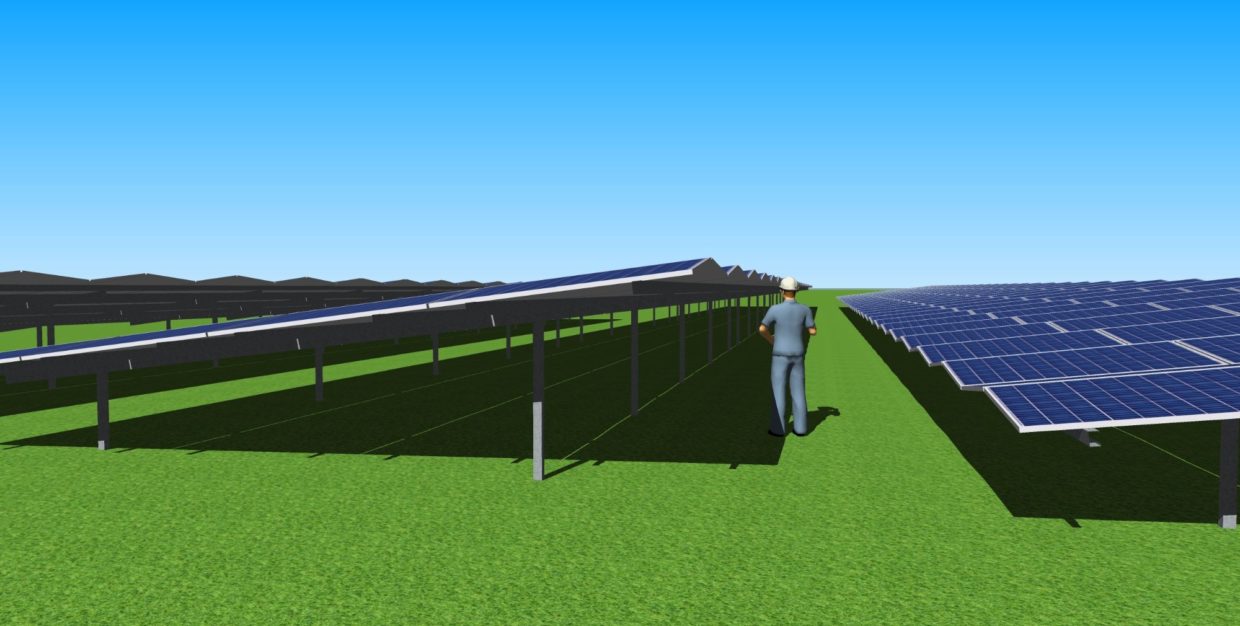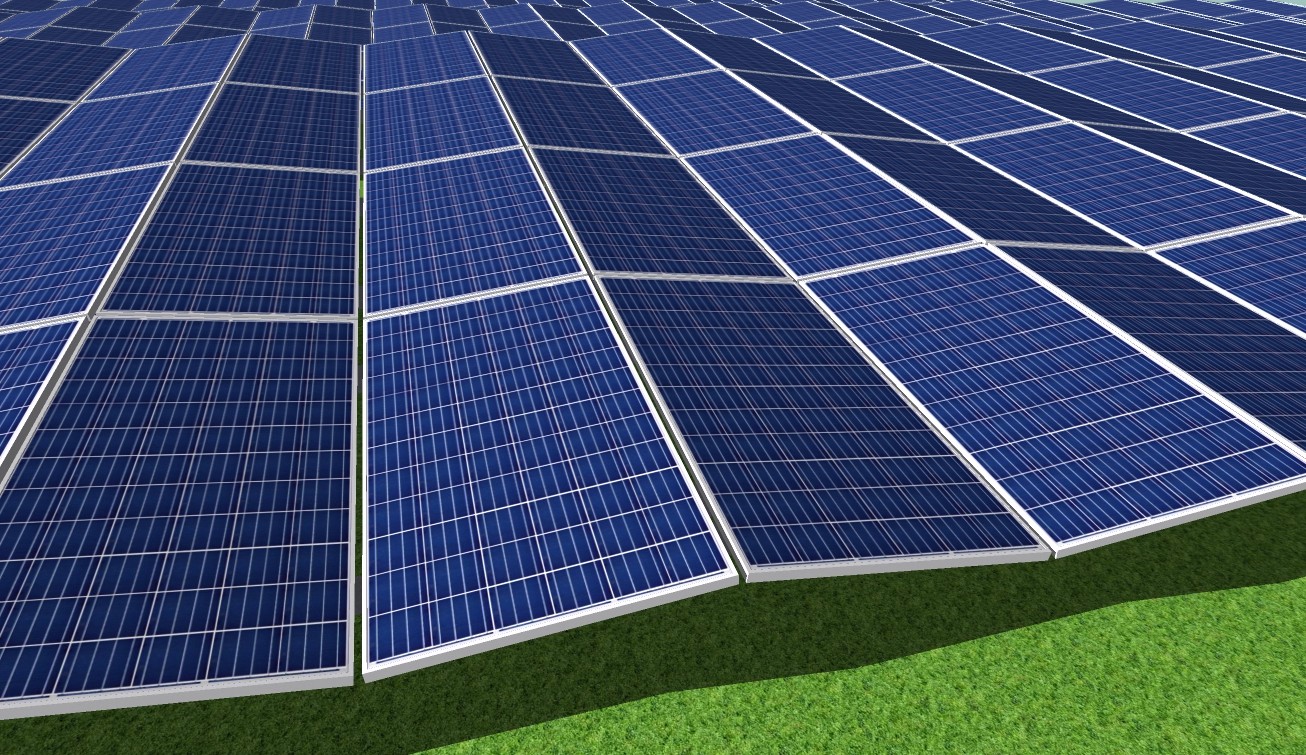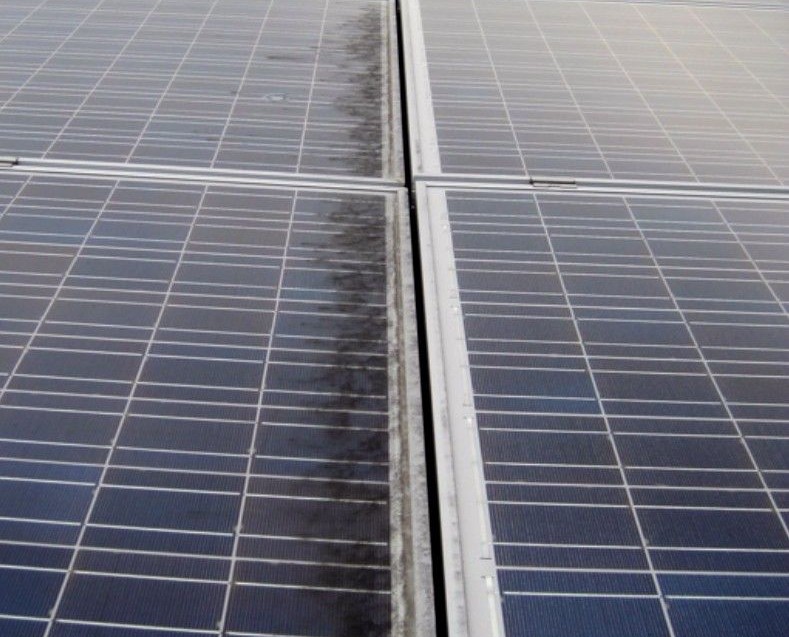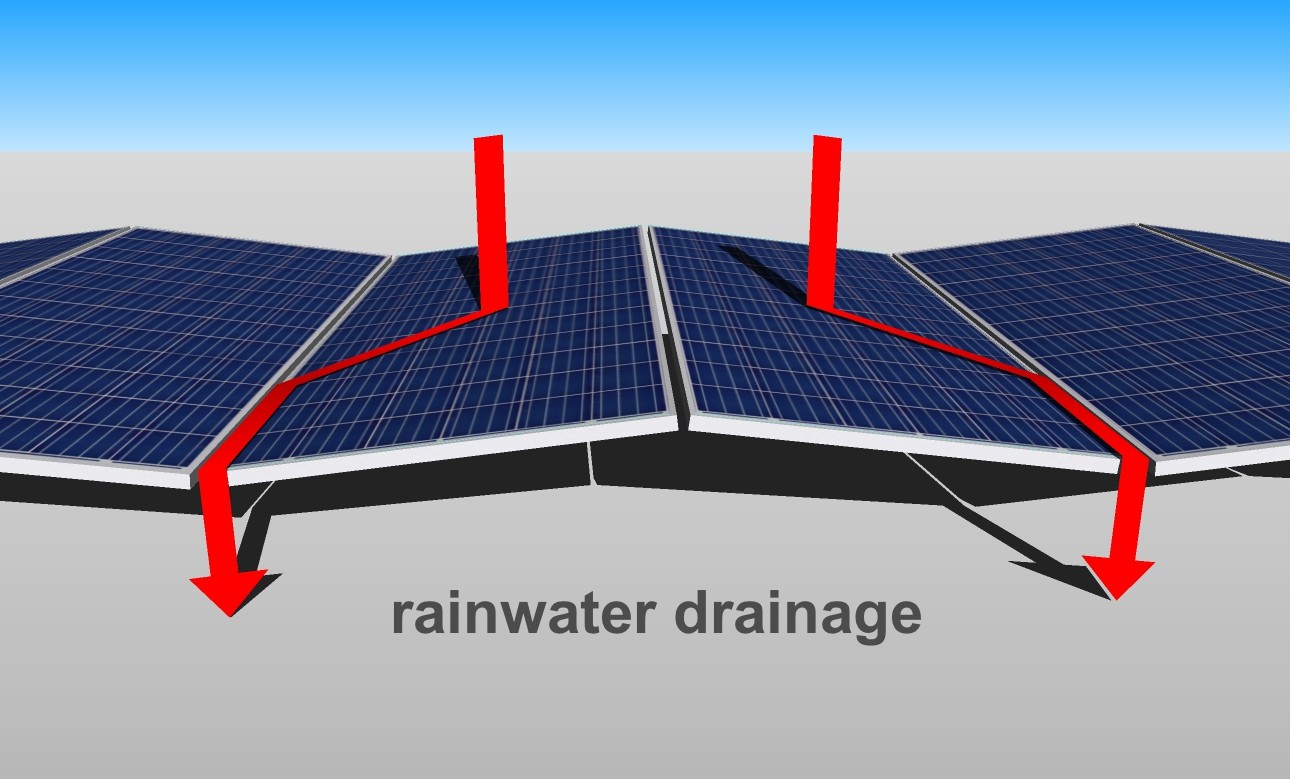Solar plants are changing. From one-size-fits-all towards well-adapted systems that give better technical answers to the most common (cost) problems. With these posts I’d like to contribute with new solar technologies that I’ve developed over the last couple of years.
In my previous articles I’ve shown several variations of the X-panel solar technology. These arrangements all help the solar panels to stay clean due to better evacuation of (dirty) water. All these systems have in common that the panels are rotated while staying in the same plane, so after the rotation the module arrangement is still flat. In this article I’ll discuss a system that goes a step further: The SEW, the south-east-west arrangement (see pictures).
You’re always welcome to discuss the system. Please feel free to like or share this posting. Please note: We do not manufacture solar products, e.g. solar racking systems. What we do is offering direct licenses to solar project developers on a one-time pay-per-project basis.
Addressed solar problem:
- yield losses due to soiling
- yield losses due to shading, especially for standard equator-facing solar systems where high ground coverage is desired
- high wind loads on standard systems, especially those with large tables (e.g. four panel rows in portrait, six rows in landscape etc.)
Most of today’s solar panels are embedded in aluminum frames. At low slope angles the lower frame rail of the panel builds a horizontal raised rib at the lower edge of the module. This rib causes a back-water effect. The filthy water is not correctly run off resulting in the accumulation of dirt on the glass alongside the lower frame rail (see picture). This often results in significant loss in yield. Leading solar project developers like ENERPARC and Baywa re declare that as far as the module angle, 20° is the “magic number”. They don’t go flatter to avoid soiling losses.
 SEW (south-east-west): The SEW-panel overcomes this problem in a new, simple and yet extremely effective way: Instead of rotating the panels in their own plane, the solar modules are arranged in a zig-zag-like way, much like an east-west system, but at the same time inclined towards the equator.
SEW (south-east-west): The SEW-panel overcomes this problem in a new, simple and yet extremely effective way: Instead of rotating the panels in their own plane, the solar modules are arranged in a zig-zag-like way, much like an east-west system, but at the same time inclined towards the equator.
It looks much like a south-facing arrangement, but the effective orientation of the solar panels is (exactly) south-east and south-west. In this arrangement the horizontal corrugation disappears. The lower frame rails now both show (the same) slopes ensuring proper runoff of rainwater (see pictures). Thus the panel will remain clean, even at slope angles of only a couple of degrees. In fact it’s the very same self-cleaning effect that the X-panel-variations have in common, although made possible in a different way.
Low slope module tables without any soiling issues
- The unique advantage of this design is that it allows to lower the angle of the module tables to values that have been impossible before. This effect can be best seen if you compare two different systems with e.g. 72 cell panels in portrait, arranged four panel rows (see picture). A standard equator-facing 20° (see “the magic number”) system would have a height of more than 3,5 meters, which would be very expensive due to its sensitivity to wind forces. It wouldn’t make sense to build it like this from an economical point of view. The same four panel lines, however, arranged in a 10° SEW system, will cut the wind loads as well as the system height roughly in half. Installation would be easier, since even the uppermost panel row is within easy reach for the installer. You’d have to install spacers to lift up the panels a couple of centimeters, but the cleaning effect and longer cleaning cycles should easily compensate for that. Most of all: The SEW system allows for a very high ground coverage ratios of 80+ percent while assuring enough distance between the table rows for service vehicles.
To sum up, the main benefits of “SEW south east west” are:
- perfect self-cleaning capabilities for reliable energy yields
- reduced wind loads due to much lower slope angle of the tables
- reduced shading effects due to much lower slope angle of the tables
- high ground coverage ratios while assuring enough distance between the table rows for service vehicles
- perfect for sites where the ground is expensive (and therefore a high ground coverage is desired)
- perfect for regions where wind loads pose a serious challenge





